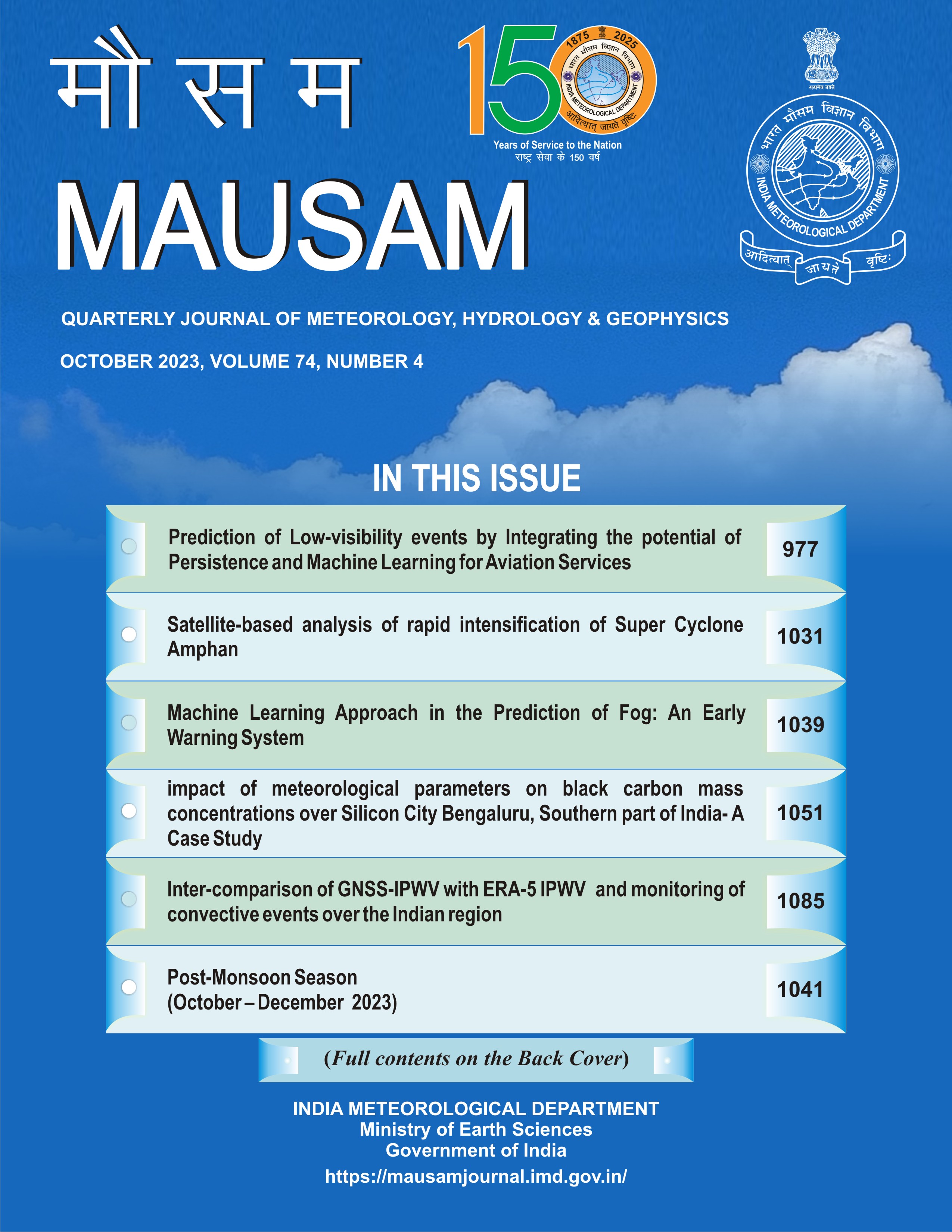District wise spatiotemporal analysis of precipitation trend during 1900-2022 in Bihar state, India
DOI:
https://doi.org/10.54302/mausam.v75i4.6673Abstract
Precipitation over a region plays vital role in determining availability of water resource whereas study of spatiotemporal distribution of rainfall helps in managing precipitation associated risks like drought, flood etc. The present study is carried out in the state of Bihar, India using District-wise rainfall data of Bihar for period 1900–2022. Major findings of study indicate that CV and SD of monsoon season and annual rainfall are in a moderate range except for districts Begusarai and Jahanabad; however, CVs for pre-monsoon, winter, and post-monsoon seasons were high for all the districts. Innovative trend analysis of the rainfall indicates either no trend or a negative trend except in few districts, and in recent years the negative trend is observed in almost all the districts. To understand homogeneity in rainfall, the precipitation concentration index and its trend analysis performed through Mann-Kendall test. PCI analysis indicates irregularly distributed annual and uniformly distributed monsoon rainfall. High inhomogeneity in annual rainfall is due to the post-monsoon PCI contribution. PCI trend was found positive in the southern, extreme northern, and central parts of Bihar, whereas extreme west districts of Bihar like Aurangabad, Bhojpur, Buxar, Rohtas, and extreme eastern districts like Purnia, Katihar, Araria, and Supaul had negative trend.
Downloads
Published
How to Cite
Issue
Section
License
Copyright (c) 2024 MAUSAM

This work is licensed under a Creative Commons Attribution-NonCommercial 4.0 International License.
All articles published by MAUSAM are licensed under the Creative Commons Attribution 4.0 International License. This permits anyone.
Anyone is free:
- To Share - to copy, distribute and transmit the work
- To Remix - to adapt the work.
Under the following conditions:
- Share - copy and redistribute the material in any medium or format
- Adapt - remix, transform, and build upon the material for any purpose, even
commercially.



